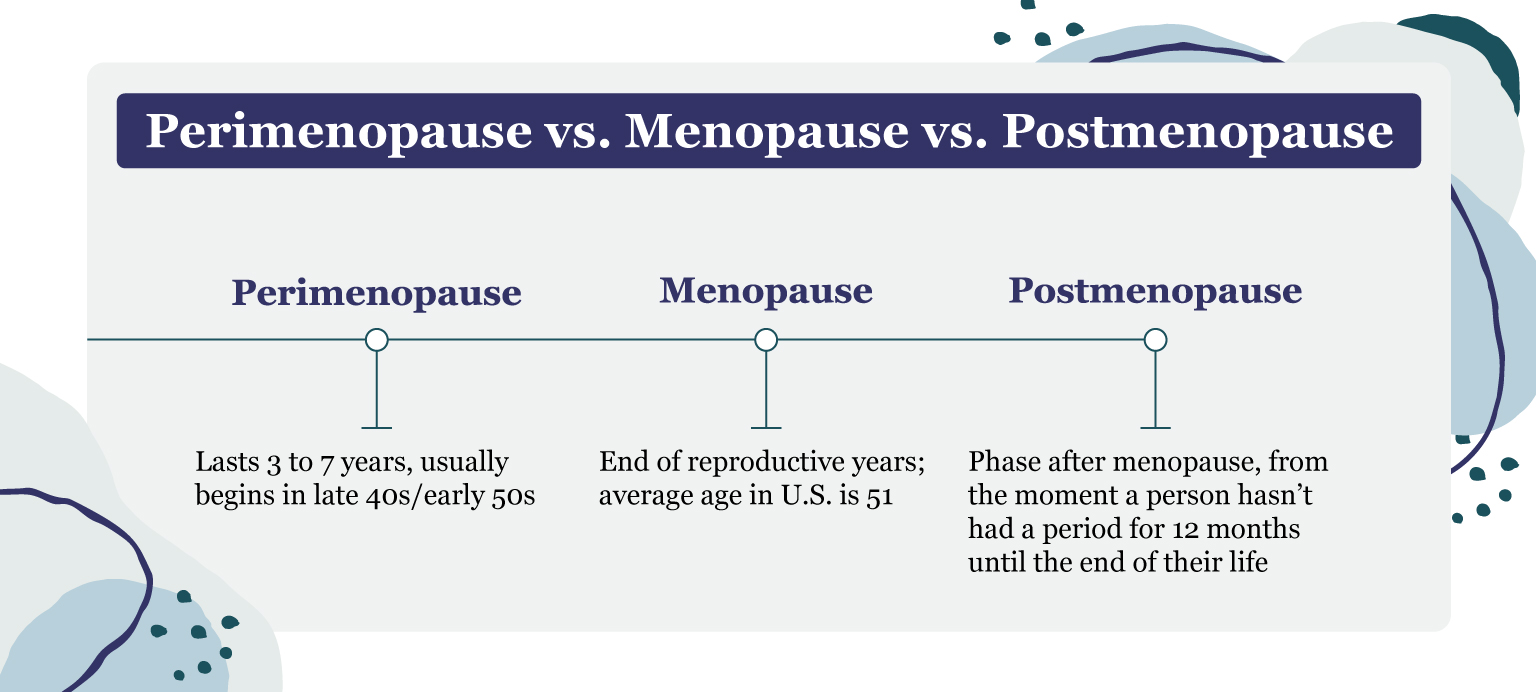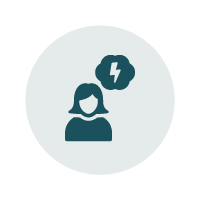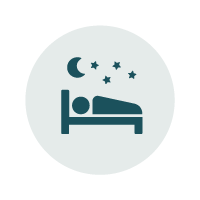A Guide to Perimenopause, Menopause, and Postmenopause

Even as honest conversation around women’s health has become more common, the menopause transition remains a taboo in American culture. When menopause is mentioned in the media or even within families, the experience is often misunderstood.
“People who are experiencing menopause may be perceived irritable or angry and have mood swings or emotional instability,” said Kelly Walker, DNP, CNM, director of the Nurse-Midwifery/Women’s Health Nurse Practitioner program.
Having begun her career serving women, persons, new parents, and infants, Walker over time developed a holistic approach to care, particularly as patients go through transitions, from menarche to perimenopause.
Today, as an outpatient gynecological provider, she believes these stereotypes risk marginalizing people at a meaningful point in their health and well-being. When such caricatures exist, patients are not seen holistically, with unique spiritual, physical, and mental needs that may be heightened during this time.
With shared decision-making and integrative strategies, women and their providers can prepare for and reflect on the transition in a healthy, holistic way.
Table of Contents
Perimenopause vs. Menopause vs. Postmenopause
A natural part of aging, the menopausal transition marks the end of a menstruating person’s reproductive years. Usually, this phase of life begins in the late 40s or early 50s. The ovaries start making less of the reproductive hormones estrogen and progesterone, which causes changes in menstruation until eventually, cycles stop entirely.
Although “menopause” is often used as a blanket term, the transition can be divided into three phases, according to the Mayo Clinic. For patients wondering, “How long does menopause last?” perimenopause can occur three to seven years before menopause.
Perimenopause is the first stage of this transition, during which the reproductive hormone levels rise and fall unevenly. While the body adapts, people may experience unpleasant side effects, such as hot flashes, brain fog, or perimenopause anxiety.
Menopause is confirmed after a person has 12 months without a period. The ovaries stop releasing eggs, and a person can no longer become pregnant. Surgical menopause occurs after surgery to remove the ovaries (an oophorectomy), which triggers a sudden end to menstruation.
Postmenopause is the menopausal transition’s final phase, from 12 months after an individual’s last period to the end of their life. Some people have less intense or fewer symptoms in postmenopause, while others continue to experience them.

Perimenopause can span three to seven years, usually beginning in the late 40s and early 50s. The average menopause age is 51 in the United States, and the phase that follows in postmenopause.
Am I Going Through Menopause?
As the reproductive hormones decline in perimenopause, people may experience a variety of symptoms and signs. Hot flashes and mood swings may be the most visible signs of menopause. But there are also more subtle perimenopause and menopause symptoms, including trouble sleeping, incontinence, and skin dryness.
Patients should also understand that different people, even those within the same family, may have different perimenopause symptoms. Lived experience may affect a person’s menopause symptoms, according to Lisa Peyton-Caire, founder and CEO of The Foundation for Black Women’s Wellness.
“Because of hormonal shifts, we feel changes in our mental health, with anxiety and panic attacks. Those are two that come up a lot, particularly for women of color,” said Peyton-Caire.
Perimenopause and menopause symptoms may vary by culture and geographic location as well, according to Francesca Dupraz, psychotherapist and author of the Mindful Menopause Workbook.
“It’s hard to know whether it’s genes, the environment, the weather, or even the social construction of what menopause is,” Dupraz said. Nutrition may also play a role. For example, the phytoestrogens in soy tofu may lessen hot flashes in menopausal women, according to a 2015 Climacteric meta analysis.
Although some people have none at all, many will experience at least one of the common symptoms and signs of menopause and perimenopause below.
Possible Signs and Symptoms
Symptoms
- decreased libido
- pain with intercourse
- incontinence
- sleep disruption
- anxiety
- insomnia
- difficulty with memory or concentration
Signs
- vaginal dryness
- facial hair
- thinning hair
- weight change
- skin changes
- higher blood pressure
- loss of breast fullness
Perimenopause: What to Expect and How to Prepare
Before perimenopause begins, Walker encourages people to take proactive steps to prepare for the transition.
Build a relationship with your primary care or women’s health provider.
“You want to make sure you have a good relationship with your provider, so you can talk about, ‘I’m having irregular periods,’ or ‘I’m having hot flashes,’” said Walker. Establish strong communication now, so that when perimenopause symptoms start, your clinician can help address any concerns in a way that suits your unique physical, mental, and emotional needs.
Practice talking about menstruation and sexual health with providers.
“It’s very difficult for people to talk about sexual health,” Walker said. When your clinician broaches the subject, take the opportunity to ask questions or share experiences. Becoming more comfortable with these conversations can lessen any discomfort of discussing perimenopause when it begins.
Learn about common perimenopause symptoms and signs.
Knowing the commonly overlooked indicators of menopause can empower patients to receive further education and, if needed, support.
“Really, it comes down to symptom bother and management,” said Stephanie Faubion, MD, MBA, medical director of The North American Menopause Society. “If perimenopausal symptoms are bothering a woman, she should seek care.”
Create space for others to talk about their menopause experiences.
Ask friends and family members thoughtful questions about their own menopause transition, and listen to their stories and symptoms — even if you cannot empathize yet. Doing so can lessen the historical stigma around menopause, and it acknowledges the fullness of people’s experiences.
Perimenopause: What to Expect and How to Alleviate Symptoms
To manage perimenopause symptoms, Walker encourages patients to consider the activities they already enjoy and start small. For instance, those who enjoy being outside might take a 20-minute walk three times a week.
Generally, be willing to try different strategies at different times. “You might try something and you’re like, that didn’t work well, and then, it might be a year later, and it works well,” Walker said.

Hot Flashes
A common symptom of perimenopause, a hot flash is the sudden feeling of heat in the upper body.
How to Manage
- Incorporate anti-inflammatory foods — including whole grains, green leafy vegetables, nuts, fatty fish, beans and lentils, and fruits — into daily meals.
- Wear cool clothes, such as breathable cotton, and layer them for easy removal.
- Stop tobacco use or vaping (Visit Nursing@Georgetown’s “Nurses Explore the Health Effects of Vaping” to learn more.)

Anxiety, Stress, or Panic
Though not the norm, changing hormone levels may cause emotional distress.
How to Manage
- Download a free mindfulness app and practice a short, guided meditation. (Mindfulness may ease these symptoms, according to a 2019 Climacteric study.)
- Schedule a massage therapy session, if possible.
- Therapeutic options, such as counseling, may be helpful for some.

Sleep Disturbances and Insomnia
Hormonal changes also may affect an individual’s sleep quality.
How to Manage
- Light exercise and movement, even 20 minutes of yoga, during the day can improve sleep at night.
- Practice stress reduction before bed by not checking email or social media and creating a non-stimulating environment (Find more tips at Nursing@Georgetown’s “Sleeping Well in the Digital Age.”)
- Keep the bedroom cool, and have an extra T-shirt nearby in case of night sweats, another common menopause symptom.

Mood Changes or Disturbances
Levels of serotonin, a mood-regulating hormone, fluctuate during perimenopause, causing “mood swings.”
How to Manage
- Limit alcohol consumption, which Walker said can exacerbate mood swings.
- Yoga (particularly Hatha yoga, which is slower-paced) and tai chi can be effective relaxation strategies.
- Find a creative outlet, such as learning an instrument or trying a new style of cooking.
How to Maintain Holistic Health During Postmenopause
In postmenopause, patients have the opportunity to deepen relationships with their provider team and move healthily through the aging process.
Check in on cardiovascular health.
The risk of cardiovascular disease increases in postmenopause. For this reason, Walker says postmenopause is an important time to prioritize cardiovascular health. Healthy nutrition and regular exercise can help, as can asking a provider for advice on better protecting the heart.
Prioritize preventative care and screenings.
Menopause marks a sensitive time in a person’s life. As age increases, so does the risk of certain medical conditions, including osteoporosis, stroke, heart attack, and cancer. “It’s absolutely imperative to be diligent, intentional, and completely committed to ensuring that we’re doing all of the preventative health measures, including appropriate screenings and talking with our providers as we notice changes,” Peyton-Caire said.
Allow space for grief.
For some, leaving the childbearing years is painful, and Dupraz encourages patients to fully process this grief. At the same time, consider that there are many ways to be a mother. “We define mother in quite a limited way. How can you maybe rejoice in being a mother in other ways?”
Tips for Managing Perimenopause Symptoms in Public Spaces
Below, find practical tips for reducing the discomfort of common perimenopause symptoms when experienced in public settings.
Keep period products on hand.
Perimenopause periods may be irregular, according to the Mayo Clinic. People may skip periods, have shorter or longer cycles, or experience heavier or lighter flows. Carry supplies with you to manage any unexpected bleeding. Products that handle leakage, such as blood-wicking underwear or menstrual cups, may also help.
Know your triggers for hot flashes.
For some people, hot flashes are set off by specific triggers, such as caffeine, alcohol, or spicy foods, according to the Mayo Clinic. Start observing your surroundings when a hot flash occurs, and note any patterns. For example, if hot flashes tend to happen when you are wearing tight clothes, try to wear loose clothes and cooler fabrics when in public.
Keep track of migraine signals.
Similar to hot flashes, migraines may be triggered by specific experiences, such as lack of sleep, and they may get worse or start during menopause, according to the North American Menopause Society. Note your triggers and take steps to lessen the intensity — for example, keeping snacks available if hunger is a trigger.
Wear clothes in layers.
Hot flashes can happen suddenly, and while brief, they can be overwhelming. Layering your clothing to allow for easy removal can help. Also, as previously mentioned, opt for breathable fabrics.
Where to Learn More About the Menopause Transition
“There is a real movement to care for women during this time,” Walker said, and today, many helpful resources are available online. To learn more about perimenopause, menopause, and postmenopause, visit the web pages below.
Resources from the North American Menopause Society
Resources from U.S. Governmental Agencies
- Hot Flashes: What Can I Do? – National Institute on Aging
- Menopausal Hormone Therapy Information – National Institutes of Health
- Menopause – Office on Women’s Health
- Menopause: Medicines to Help You – U.S. Food & Drug Administration
- Menopausia (en español) – National Institute on Aging
- Sleep Problems and Menopause: What Can I Do? – National Institute on Aging
- What Is Menopause? – National Institute on Aging
Online Communities for Menopause
Please note that this article is for informational purposes only. Individuals should consult their health care provider before following any of the information provided.
Citation for this content: Nursing@Georgetown, the online Certified-Nurse Midwife program from the School of Nursing & Health Studies


